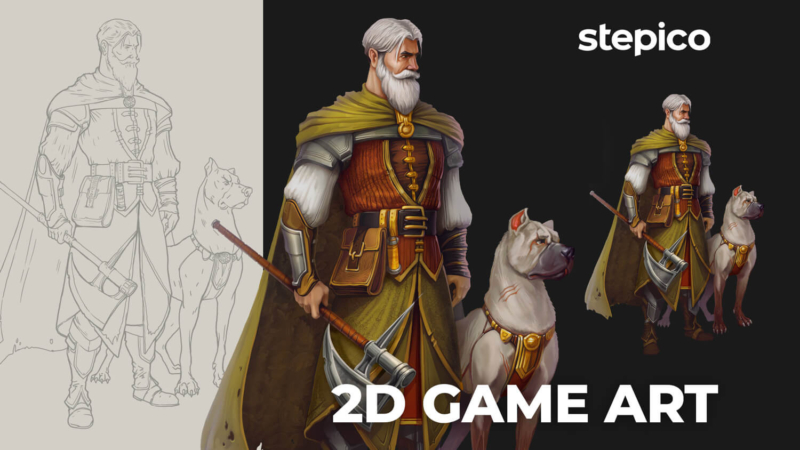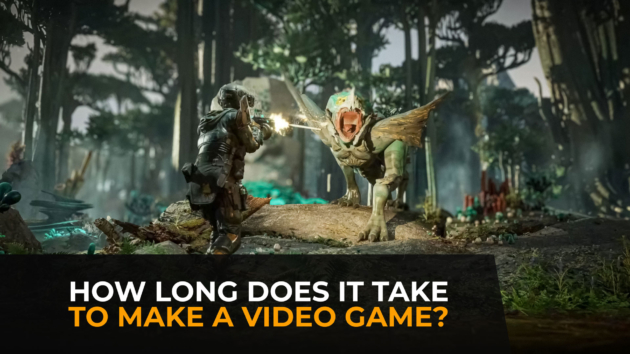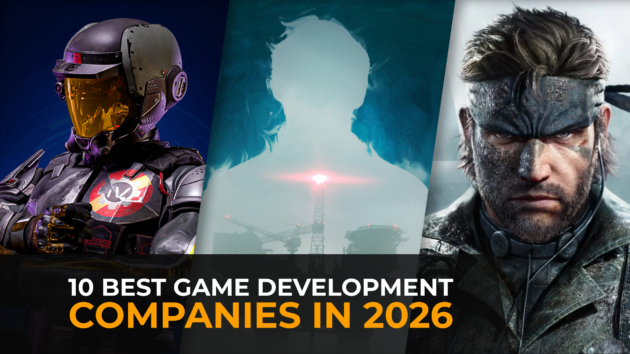Have you ever played the world’s famous games like Candy Crush, Flappy Bird, or Limbo? These 2D games top the charts, surprising players with impeccable graphics and cool mechanics. Regardless of the low difficulty of development of such games, they often bring more income than 3D ones. The Candy Crush game alone generated $1.21 billion in 2021, showing a significant rise compared to $77 million during the release year (2012), making it the sixth-highest-grossing video game ever for mobile.
Game art plays a huge role in the game’s reputation. Despite its simplicity, 2D art remains highly popular in the game world. Google Trends statistics show that the demand for such art remains stably high in the gaming industry. Data also shows that the worldwide interest in 2D games has grown over the last five years, reaching its peak popularity at the beginning of 2023.
Hence, 2D game art is a hot topic in 2023 and years to come. So, we decided to share our step-by-step tutorial on how to create good 2D art for a game. Having interviewed two 2D Art Leads at Stepico, we’re ready to give you a glimpse into our creative process.
The ways of creating 2D game art differ depending on the game genre; therefore, this tutorial is based on Match 3 and RPG genres. Let’s dive in!
But first, let’s define 2D art.
What Is 2D Game Art?
2D art creates environments, characters, and objects in just two dimensions – height and width. 2D art is widely used in making 2D games and even 3D ones. Game artists use it as an auxiliary tool to do the job more efficiently.
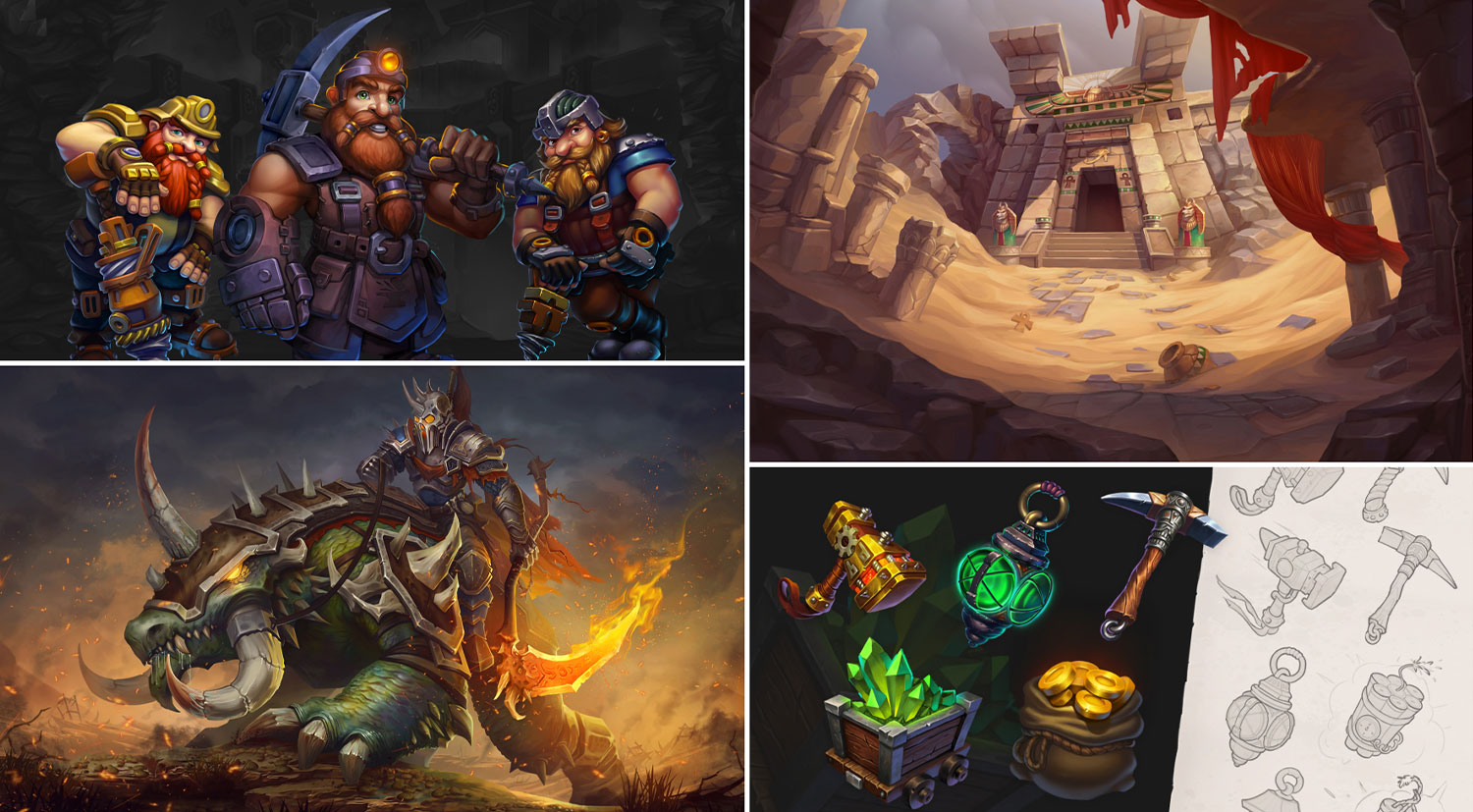
2D Game Art Styles
With a wide variety of styles used for 2D games, everyone can find something to their liking. Artists from Stepico work with a lot of different art styles. Here are some of them:
- Pixel art;
- Vector art;
- Cel shading art;
- Monochromatic art;
- Flat art;
- Realism;
- Cartoon art.
Step-By-Step 2D Game Art Tutorial
Before getting to game art creation, the team can compile a guide that describes the pipeline and the sequence of tasks. This way, the artists know the phasing of the work and can ensure a fast and high-quality process.
So, how is the game art created? The interviewed Team Leads have pointed out several crucial steps of developing 2D game art based on Match 3 and RPG game genres.
Choosing a Game Style
The first step is picking a 2D art style. The client either comes to us with a pre-made concept and stylistics or entirely relies on our vision. In the latter situation, our game designers set the processes themselves. Based on this idea, the experts bring out optimal game characteristics according to the genre of the game and its mechanics. When everything is sorted out, the team proceeds to the visuals.
Sometimes the client’s and game designer’s ideas on game style differ. For example, hidden objects games usually use realism art, while there isn’t a lot of casual art in such a genre. In this case, the game designer offers other game genres to flourish the plot.
What game genres are best suited to 2D art? In general, 2D art fits almost all game genres. Some of them, such as pixel art, puzzle games, visual novels, or platformers, are ideal for 2D. The creation of 3D art is more appropriate for other game genres, such as first-person shooters. Even so, 2D art can be used even by shooters (for creating concepts).
Concept Art
Concept art is the initial step in the search for an idea and visualization of specific tasks. At this stage, Project Managers and Team Leads discuss all ideas and later distribute tasks among the 2D art team. Then, 2D artists come up with various drafts.
Draft
The first stage of creating art includes finding a composition, form, and initial silhouette. A mood board with references is of great help here. Artists hastily make thumbnails (brief, compact, simplified drawings typically drawn quickly and not requiring any adjustments). The idea is to quickly show all potential options to better understand in which direction to move further. One of many thumbnails is selected, refined, and turned into a sketch.
Sketch
The sketch stage emphasizes design and a certain level of detail. There are two main attributes in a sketch, line and tone. The first allows you to visualize design ideas and materials accurately, and the second helps show depth and lighting. After successful sketching, assets are sent to the client. Once approved, the concept is brought to better detail.

Color Concept
Often after the client approves of concept art, artists work on a color palette. Color concept is used to show the atmosphere and general color scheme. Concepts can be both black & white and colored, depending on their purpose. If the game is casual, the concepts are often drawn by hand. If the game genre is more complex (like RPG), then when making a concept, the artist can use a photo collage, 3D images, and more advanced instruments.
Character Design
Time to let your imagination wild in creating your unique game characters. You can portray a human, animal, robot, or any non-existent form of life you can imagine.
But before the artist starts drawing a character, a game designer creates the lore. The hero lives in a particular world, has a unique history, performs certain functions, and it’s the game designer’s task to describe it all. Next comes the stage of finding references to help emphasize the character’s peculiarities and finding suitable objects and attributes to portray their history. For example, if the game character is a knight-errant, his clothes will be tattered from a long journey, and he may have a food-filled travel sack.
Now the artist can move on to the drawing itself. They search for a suitable form and silhouette of the character with the help of linear drawing, sets of primitive shapes (e.g., triangles), or matte painting. When creating a concept, it is decided whether the hero will move and how it will do so. Depending on this decision, artists use different design options and choose suitable static or dynamic poses for the character.
Environment Design
Environment design is an excellent chance for artists to show their creativity and skills. Locations in games are a general environment in which there is a large number of objects that interact with each other and are affected by perspective and light.
- Draft stage – the artist draws up a general composition;
- Sketching stage – they refine various elements and add small details to the layout;
- Color concept stage – the artist sets the general color scheme, atmosphere, and light effect;
- Render – the artist refines various elements and components, shows what material the objects are made of, all light interactions, and adds additional effects (e.g., highlighting an element that needs to draw the player’s attention).
How Do Artists Come Up With Location Ideas?
The client sends either an abstract or an accurate description of what they expect to see. In the case of an abstract description, the art team generates the idea itself. For example, the client requests a snowy mountain background. Artists understand that, first of all, they have to depict winter, mountains, and lots of snow lying around. Next, they develop the idea, deciding where and how to put mountains in the frame, what atmosphere should prevail, what props to add, etc.
Here’re some examples.
One of our cases with abstract description was to portray Santa a bit differently, in a bad manner. The idea was to make him a hooligan and drunkard. Therefore, we created an abandoned city with a bar, abandoned cars, garbage and bottles on the pavement, etc., to convey the atmosphere as much as possible. An example of an accurate description of this case would be as follows – a store on the right, a local bar up ahead, a broken-down car with a crack in the left headlight (if it plays a significant role in the plot), a lost Santa’s shoe, and two brown bottles of port wine on the left.
Another of our vivid cases is called Mummy Frogs. The game takes place in Ancient Egypt. Such a place and time are usually associated with sand, pyramids, sarcophagi, and lots of gold and jewels. Stepico artists masterfully combined the idea of Egypt and frogs, creating unforgettable locations with classic Egyptian statues with frog heads decorated with extraordinary jewelry according to the theme.
How Do Artists Make Their Locations Unique?
Real locations, such as a forest or mountains, are pretty commonplace. So, how to make your game environment special? Let’s take mountains as an example. When creating a location, the team is guided by the art style and theme of the game. There may be the ruins of some crypt amid mountains or a ski lift that hint at the place of action, be it an old world filled with magical relics or a modern ski resort. If, for instance, some small tracks are added to the mountain slopes along the giant ones, players can witness a recent Yeti chase.
“With the help of visual add-ons, we tell a story to the players,” says our 2D Art Lead, Serhiy. Thus, the creation of a location must be approached thoroughly. Even the smallest detail can change the entire setting and cause deviation from the original theme.
A Dwarf village can be located in woods with short, stout trees with heavy leaves. If the game displays an elven forest, the trees will look tall and elegant, with standout leaves. If the game style is steampunk, the forest can consist of trees made of iron pipes with leaves made of metal sheets. Instead of leaves, there can even be circular saws, which will let the player know that the area is dangerous.
2D Game Icons & Items
Creating and discreetly combining buttons, badges, status bars, and other noticeable stuff in the game menu and between levels – it’s a task of a UI/UX designer. It doesn’t matter how good 2D art the game has whenever the UI/UX isn’t up to standard. If navigating a game is cumbersome, players won’t stay for long. A good UX is all about convenience and clarity. It should evoke positive emotions in the user after using the product. A good UI should reflect the essence of the functions that rely on elements. It should be within the general art concept and not stick out like a sore thumb.
In UI/UX, quantitative quality applies, ensuring that the user achieves the goal as quickly as possible within the screen frame. The UI/UX designer also handles the color code, following the core principles (e.g., green is a positive action or a CTA, and red is a negative one).
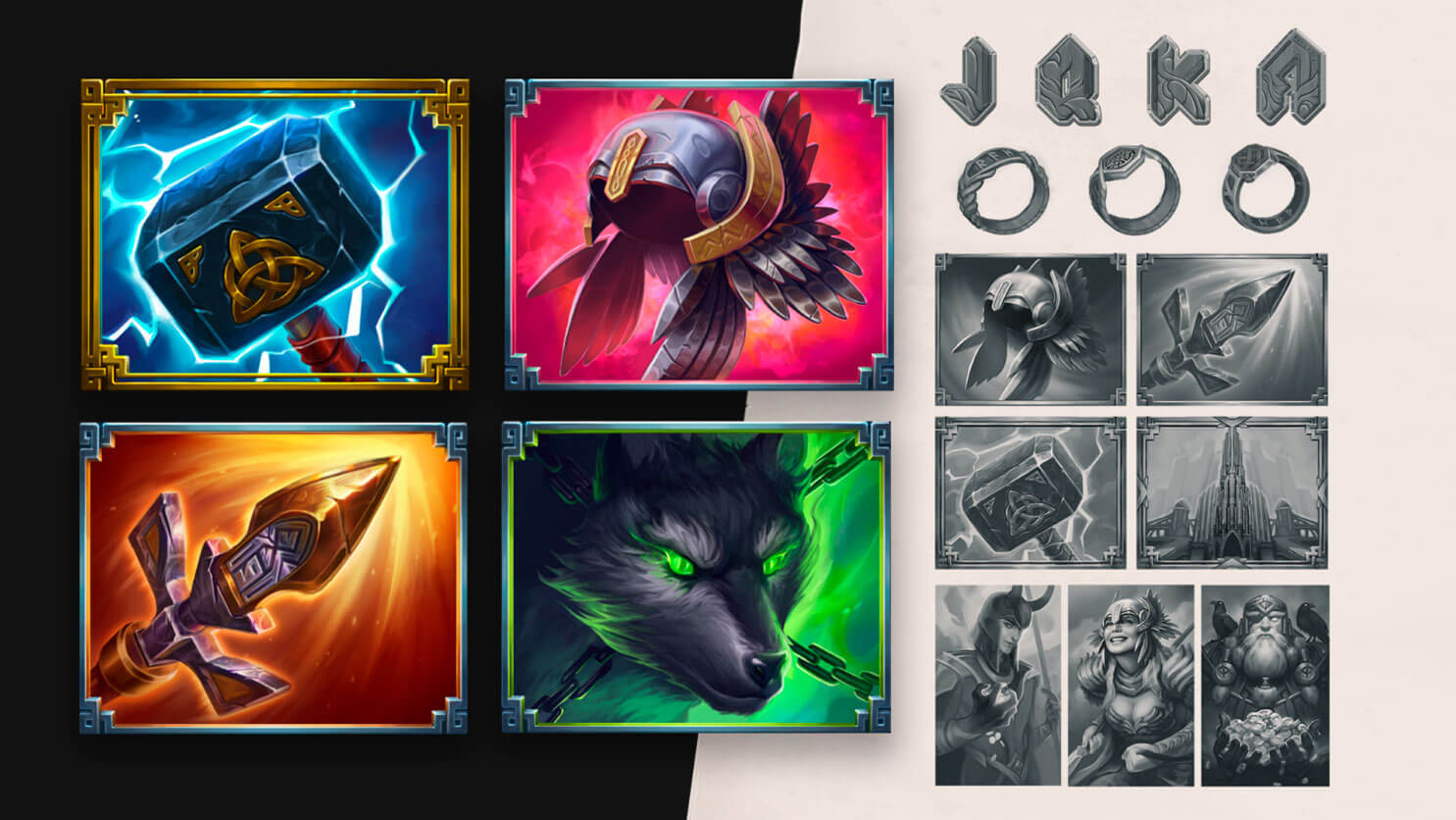
Where to Find a Good 2D Game Art Studio?
Outsourcing 2D game art is a great way to save time and lower expenses. But when it comes to it, who to choose, a freelance artist or a 2D game art studio?
- First and foremost, when getting game art services from an outsourcing studio, you get access to a broader pool of expertise. Instead of one person, you have a full and coordinated team at your disposal. A team comprises artists of various profiles, including UI/UX designers, animation designers, who are responsible for high-quality 2D animation services, and others. By choosing a 2D game art studio and its extensive experience, you can rest assured that your idea will be brought to life regardless of complexity.
- You don’t burden yourself with management. A game art studio does all handling on their side with the help of Project Managers and 2D Team Leads. Thus, you can focus on other important matters and leave the task to the professionals.
- Last but not least, you don’t take unnecessary risks. 2D game art outsourcing studios care about their reputation; therefore, they deliver art of high quality and constantly provide feedback. Compared to most freelancers, studios pride themselves on having smooth workflows and delivering great solutions fast.
So, where to find a good 2D game art studio? Check out online platforms like ArtStation, GoodFirms, Behance, and Clutch. There, you can take a look at successful cases and various art vendors created. Therefore, you can see if the selected studio has the expertise in the game art style and genre you need. Plus, you can check reviews and learn how the company interacts with customers.
The Bottom Line
Creating unique art is the key to success. However, in today’s world, it is increasingly difficult to create something one-of-a-kind. “New cool ideas are made from the old and the apparent combo. The best idea is a mix of what you’ve already seen,” says Volodymyr, Stepico’s 2D Art Lead.
When it comes to talent and knowledge, there’s no match for Stepico’s 2D artists. We expertly combine creativity with 9+ years of experience to create flawless 2D game art of any style. Having worked with industry leaders like Gameloft, Immutable, and DreamWorks, we know how to create art that captures everyone’s hearts. Contact us now to get your perfect 2D art!
